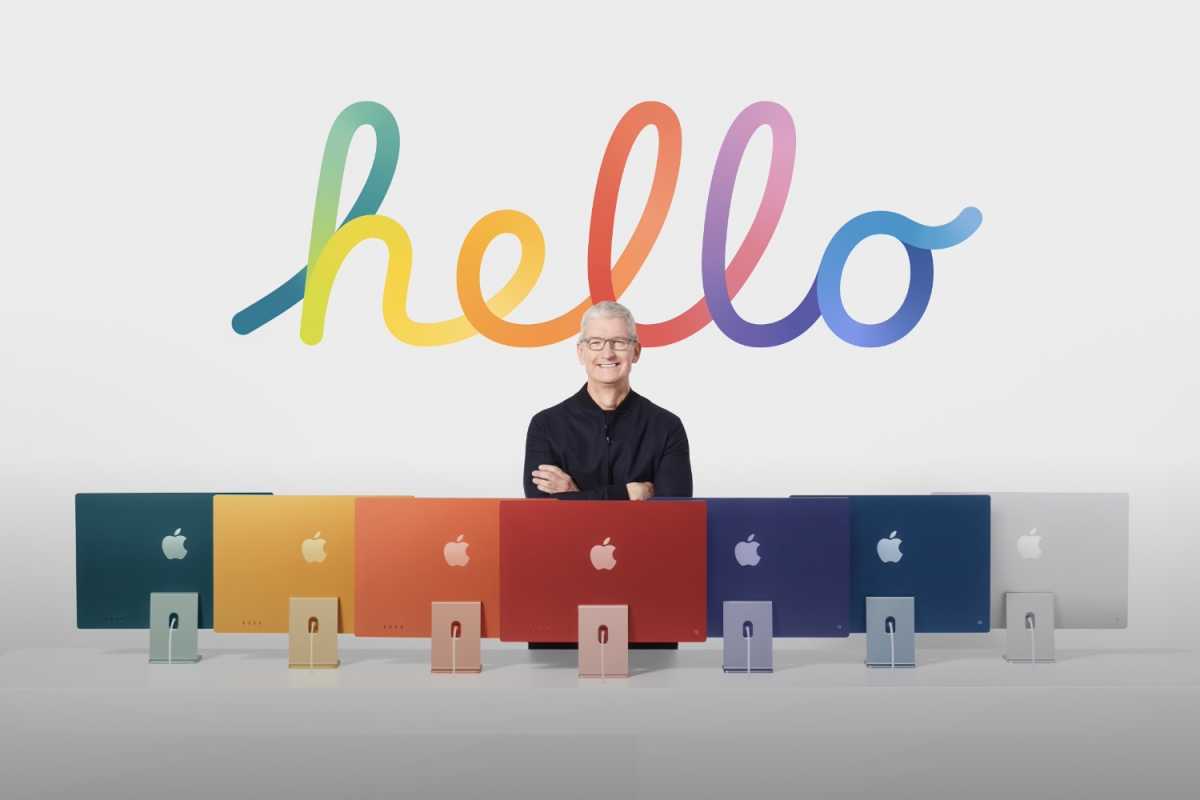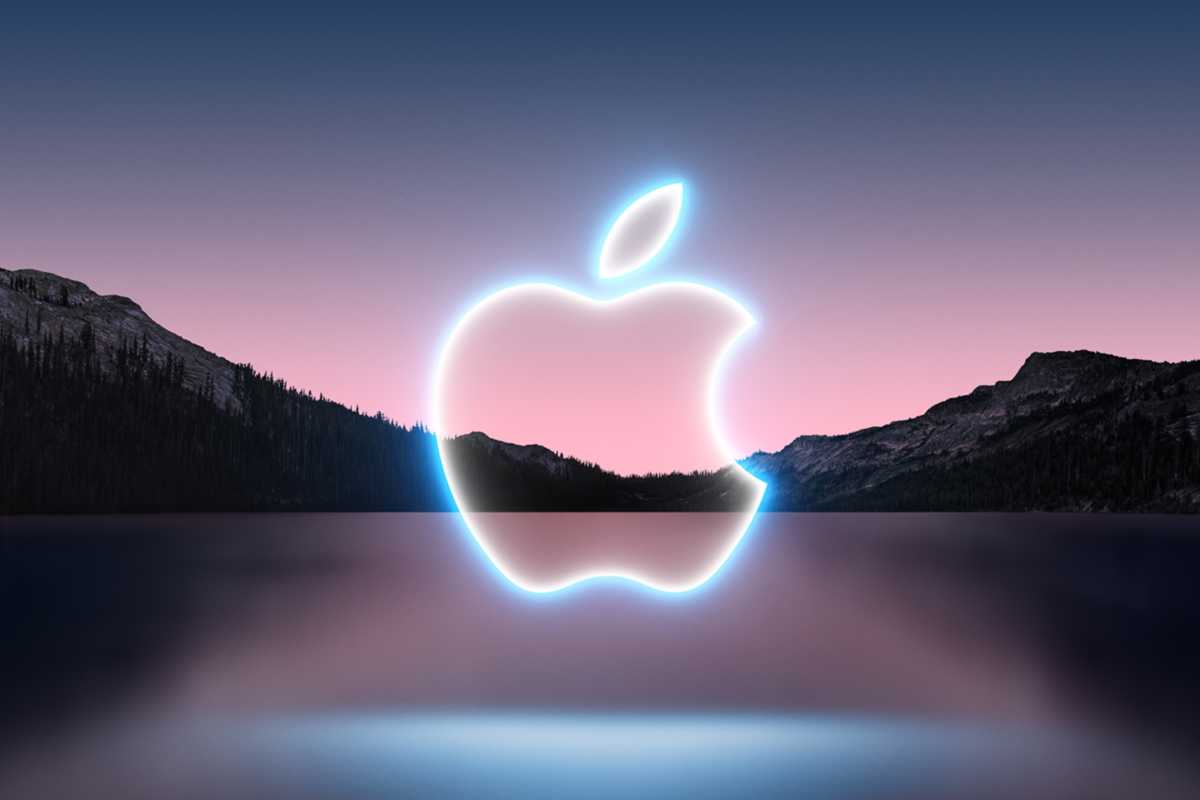Apple year in review: The highs and lows of an eventful 2021
It can be hard for long-time Apple fans to truly appreciate just how big the company has become. The image of the company as a small scrappy underdog fighting against corporate giants has been a part of its culture and charm since the beginning. But make no mistake: Apple is the corporate giant. Its worth is just barely under 3 trillion dollars and the company’s products and services reach well over a billion users.
So when Apple does something, even something utterly expected like “release a new iPhone,” it’s a big deal. It’s not just of interest to a relatively small group of diehard Apple enthusiasts. It can move entire markets. And Apple did a lot of somethings this year, some expected, some surprising, and some that will leave a lasting impact.
Here’s a brief overview of Apple’s eventful 2021, with notes about the significance (or lack thereof) of each event.
January-March: A very slow first quarter
The first few months of 2021 were quite slow, with a lull that stretched through March. There were iOS 14 and macOS 11 updates, a few second-season releases of Apple TV+ shows, and a handful of new Apple Arcade games, but the first three months of 2021 were very thin on new products or announcements.
April: Fixing Apple Arcade
In early April, Apple changed the rules of Apple Arcade for the better. In a major expansion adding over 30 games, Apple eased off on its prior rule that Arcade games have to be titles that have never appeared in the App Store before. Now, you’ll see frequent Apple Arcade releases of App Store classics like Crossy Road or Tiny Wings, with a “+” added on the end to denote the Apple Arcade version.
Apple Arcade still isn’t all it could be, but bringing App Store classics to the service, free of ads or in-app purchases, was a big step in the right direction.
April: “Spring Loaded” event

Apple
In late April, Apple held a Spring Loaded event where it revealed several new products along with the ability to share Apple Card accounts with family members. Here are the products Apple launched during the online keynote:
AirTag
The first product to launch from this event was the AirTag, Apple’s own object-tracking accessory. At $29 for one or $99 for four, it’s priced comparably to similar high-end products from Tile. The big advantage is that you need no special software. It integrates with Apple’s Find My app and iOS, so every iPhone or iPad or Mac is a potential item-finder for you. AirTags use BlueTooth but also Ultra Wideband for more precise location with iPhones that have a U1 chip (iPhone 11 and later).
Apple TV 4K (2nd generation)
Nobody really needed a new Apple TV 4K, and indeed the very modest improvements to the new model are not worth upgrading for. But Apple gave the troubled Siri Remote a complete overhaul, which was long overdue. It’s great now, and worth picking up if you have the old Apple TV 4K.
24-inch M1 iMac
The new 24-inch iMac was not the first product with Apple’s hot new M1 chip, but it was the first to make a statement. Where the MacBook Air, 13-inch MacBook Pro, and Mac mini released in 2020 kept the old designs with the Intel chip replaced by an M1, the 24-inch iMac brought bright new colors, an ultra-slip design, smaller bezels, and a wireless keyboard with Touch ID. It was a real step forward for the iMac and Apple silicon, and We’re excited to see what Apple comes up with for a larger version (rumored to be 27-30 inches, and coming in 2022).
M1 iPad Pro
The M1 is, for lack of a better description, exactly what we would have expected from an A14X processor if Apple would have made one. So it’s no surprise that Apple released a new iPad Pro (in both 11 and 12.9-inch sizes) with the M1 inside. Beyond the new faster processor, these iPads added a new “Liquid Retina XDR” display for excellent HDR capabilities in the 12.9-inch model, a new 12MP ultra-wide front camera with Center Stage panning, and a whopping 64GB of RAM in the higher storage capacities.
June: Worldwide Developers Conference
June is when Apple holds its Worldwide Developers Conference, where it unveils the new operating systems coming in the fall, and often a new product or two as well. Despite rumors leading up to the event, there were no new hardware products announced this year. Instead, the focus of this year’s keynote was strictly on the new version of iOS, iPadOS, macOS, and watchOS.
iOS 15
As with just about every new iOS release, iOS 15 is full of new features big and small. The biggest changes are offline Siri support, a dramatic shift in Safari layout, Live Text, new sharing features, and Notification Summary and Focus features to minimize notification distractions.
Perhaps the most controversial part of iOS 15 wouldn’t be announced until later. Apple would implement a feature that scans images on iPhones for child sexual abuse material (CSAM). Despite the way it was designed to protect privacy and security, critics raised a fuss over ways they fear the technology could be exploited in the future. Apple released the parental control aspect in the iOS 15.2 update, which is not very controversial (a parent can opt into having a child account provide warnings if photos of nudity are shared in Messages), but ultimately delayed the CSAM scanning feature for iCloud Photos until it can make further adjustments to hopefully appease privacy advocates.

IDG
iPadOS 15
Aside from most of the new technical features found in iOS 15, iPadOS 15 adds a few things we wish we had last year: widgets on the home screen, the App Library, and improvements to make multitasking less obtuse and more useful.
macOS 12 Monterey
With macOS Monterey (version 12), Apple added a lot of the same content-forward features found in iOS and iPadOS 15, such as SharePlay and Live Text. The Shortcuts app finally came to macOS, too. Safari got a big redesign that was quite controversial with long-time Mac users, but Apple eventually walked back most of the major changes while adding some useful features like tab groups that sync between devices.
The most exciting new feature is Universal Control, in which you can use your keyboard/mouse (or trackpad) to move your cursor straight off your Mac display and onto a nearby iPad or other Mac, and literally drag-and-drop content between them. Unfortunately, that feature has been delayed until 2022, and has yet to appear in any of the macOS and iPadOS betas.
watchOS 8
This year’s watchOS update is relatively minor, compared to most. The Breathe app has expanded into Mindfulness and you can hold digital keys in your Wallet, and there are improvements to several apps, but there’s no real big headlining new functionality.
September: Apple v. Epic Round 1
The big Apple v. Epic Games case concluded early in the year, with a ruling issued in early September. Judge Yvonne Gonzalez Rogers handed down a huge win to Apple. Epic had to pay a $6M fine for violating its App Store agreement (basically paying Apple its revenue share), while Apple had to make almost no concessions at all.
The court found that Apple engages in anticompetitive conduct and seems compelled to make changes only when forced to by the law. But in terms of actual changes, the court only compelled one small adjustment to Apple’s anti-steering policies:
Apple…is hereby permanently restrained and enjoined from prohibiting developers from including in their apps and their metadata buttons, external links, or other calls to action that direct customers to purchasing mechanisms, in addition to In-App Purchasing and (ii) communicating with customers through points of contact obtained voluntarily from customers through account registration within the app.
Essentially, Apple will now allow apps to include a link during account creation or management to external sites, where the app developer could then allow you to make payments or subscribe to services. It doesn’t have to allow any other payment processing in the App Store, or allow apps to link out to external payment processing at point of sale in their apps, or allow other app stores on the iPhone or iPad, or really anything that Epic was fighting for.
Epic Games is appealing the ruling. Apple asked for a stay in implementing the rules change (which must be in place before the end of 2021), but the court denied Apple’s appeal, calling its motion for a stay “fundamentally flawed.” Apple appealed that decision to the Ninth Circuit Court of Appeals, which then granted Apple the stay, so Apple won’t have to make any changes until its appeal for the main case is decided, which could take many years.
September “California Streaming” event

Apple
While Apple’s big yearly September event didn’t include the iPhone in 2020, Apple returned to form in 2021 with a keynote that brought the new iPhones and Apple Watch. There were a couple of new iPads thrown in there as well. Here’s how the online event went down:
iPhone 13
The iPhone 13 was the star of the show, released in the same four flavors as the iPhone 12 before (mini, regular, Pro, and Pro Max). The big advancements were much-improved battery life, a faster processor, and improved cameras. But the iPhone 13 Pro and Pro Max got even better cameras, with a fun new macro photography capability, as well as 120Hz ProMotion displays.
iPad (9th generation)
The new base model iPad has a faster processor (the A13) and double the storage of last year’s model, while the front camera has been upgraded to Apple’s 12MP ultrawide camera with Center Stage support. It hasn’t undergone substantial design or feature changes in several years now, though, and its age is showing.
iPad mini (6th generation)
It took 2.5 years to get an updated iPad mini, but the new model is just what we’ve always wanted. A speedy A15 processor, larger 8.3-inch display with slimmer bezels, and Touch ID in the home button. It’s basically a shrunken-down iPad Air, which is just what fans of this small iPad want.
Apple Watch Series 7
Though announced in September, the Apple Watch Series 7 wasn’t released until October. This is probably the least-substantial yearly update for the Apple Watch ever. It has a bigger display with slimmer bezels, and gets just a little bit brighter, and that’s about it. The processor is the same, the features are the same, the price is the same. This is the Series 6 with a little bit bigger display.
October: “Unleashed” event

Apple
The M1 Macs at the end of 2020 were exciting for their speed, but the total redesign of the 24-inch iMac got Apple enthusiasts thinking that maybe the Mac is back. If there were any doubts, they were put to rest with the October “Unleashed” event, which gave us a MacBook Pro with new chips and almost everything we ever wanted.
MacBook Pro with M1 Pro and M1 Max
Everyone knew the new 14-inch and 16-inch MacBook Pros were on the way and they still managed to surprise us. Apple launched the new high-end versions of the M1 system-on-chip, the M1 Pro and M1 Max, with up to 10 CPU cores (8 performance and 2 efficiency) and a massive graphics boost (the Pro has up to a 16-core GPU and the Max has a GPU with up to 32-cores). They also upped the memory and dramatically improved the memory bandwidth, and added a battery that lasts a lot longer than comparable prior MacBook Pro models. In a nutshell, Apple delivered absolutely world-class performance at a fraction of the power of competing AMD and Intel products.
But that’s not all. The new MacBook Pros also returned the HDMI port, MagSafe power connector and SD card slot, and added more USB-C ports. And last but not least, they got a gorgeous new mini-LED backlit display with HDR and ProMotion. Yes, they’re more expensive, but you get a lot for the price.
AirPods (3rd generation)
The MacBook Pro wasn’t the only fresh new thing at this event. The venerable AirPods finally got an update, with a design very much like the AirPods Pro and nearly all of its features, other than silicone tips and active noise cancelling. They look better, sound better, and have much better battery life.
Apple Polishing Cloth
While not widely publicized, Apple’s new $19 Polishing Cloth became something of a meme. It’s absurd. It’s a simple cleaning cloth, nothing more, priced ten times higher than it should be. Naturally, it sold out in record time. You still can’t get one till late January.
Looking ahead to 2022
Apple certainly had a good year in 2021. Not every product was a slam dunk–we can’t say we were very excited by the modest improvements in the second-gen Apple TV 4K, 9th-gen iPad, or Apple Watch Series 7. But the Mac was a standout star. The new 24-inch iMac breathed life and color into a line that has languished for too long, and the new MacBook Pros really unleash the potential of Apple’s homegrown silicon while correcting past missteps. We finally got new AirPods, and they’re pretty good.
Services had a decent year, too. It was less about new service offerings and more about the expansion of what Apple already offers. Sharing Apple Card, group workouts on Fitness+, a cheaper Apple Music option (and lots more playlists), more and better Apple Arcade games, and even Apple TV+ started to hit its stride with plenty of great shows and movies.
Next year, we look forward to Apple completing its transition to Apple Silicon in the Mac with the M2 processor and its derivatives (M2 Pro and M2 Max). They could show up in a larger, higher-performance iMac, a redesigned MacBook Air, and an all new Mac Pro. We think we might see a new iPhone SE in the spring, before a new design for the iPhone 14 lineup in the fall. And of course, new software and services will reach all Apple’s customers, not just the ones who can afford to buy something new.
But what we’re most looking forward to is the prospect of something truly new. Whether it’s an AR or VR headset, an Apple Car, or a dramatic new software change.
I have written professionally about technology for my entire adult professional life – over 20 years. I like to figure out how complicated technology works and explain it in a way anyone can understand.
For all the latest Technology News Click Here
For the latest news and updates, follow us on Google News.
